
Brookesia griveaudi, PN Marojejy.
Madagascar - Part 7
Of all weird Madagascar inhabitants, none is surrounded by so many myths, legends and superstitions as the chameleon. In remote villages, people still believe that to touch one, step over it, or have your shadow fall on it can bring very bad luck, disease or death.

B. peirierai (left) and B. perarmata, PN Masoala. |

B. eibosei, PN Andasibe-Mantadia. |
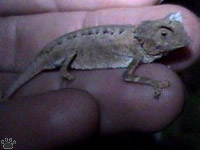
B. ambreensis, PN Montagne d'Ambre. |
Most cases of bad luck are attributed to having unknowingly stepped over a leaf chameleon (Brookesia). They are the smallest of Madagascar vertebrates, and live in leaf litter. Unlike larger chameleons, they don't have prehensile tails, and are not bright-colored. They might be a link between other chameleons and their ancestors, agama-like lizards. |
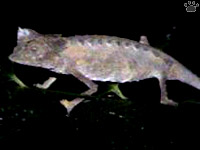
B. ambreensis, PN Montagne d'Ambre. |
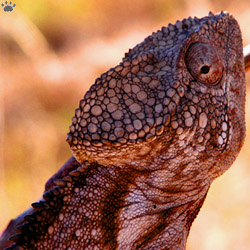
Furcifer verrucosus, Kirindi FR. |

F. belalandaensis crossing a road, Manja.
Local people were so afraid of chameleons because they can look into the future with one eye, and into the past with the other. Even now, a chameleon crossing a highway can stop all traffic for a few minutes. |
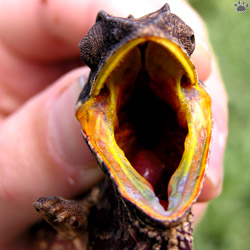
F. verrucosus, Kirindi FR. |
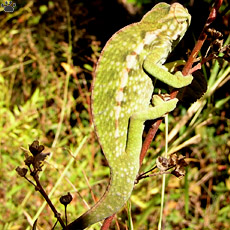
F. pardalis, Parc National Ranomafana. |

F. pardalis, Parc National L'Ankarana. |

F. pardalis, Anja Nature Reserve. |
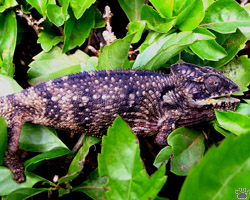
F. verrucosus, Kirindi FR. |
Furcifer chameleons are the most common group in the dry western forests and on the central plateau, but they also occur in the east.

F. angeli, PN Andasibe-Mantadia. |
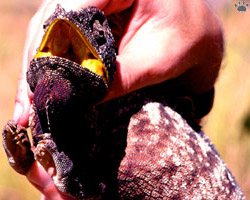
F. verrucosus, Kirindi FR. |

Calumma parsonii, PN Andasibe-Mantadia. |
Calumma chameleons are mostly rainforest inhabitants. This genus includes many small species, but also the world's largest chameleon, C. parsonii, which occasionally grows to over 60 cm (2'). |
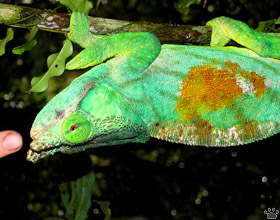
C. parsonii, PN Andasibe-Mantadia. |
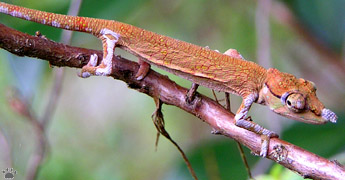
C. boettgeri, PN Montagne d'Ambre. |

C. fallax, PN Marojejy. |

Calumma gastrotaenia, PN Ranomafana. |
Chameleons are generally diurnal, but more easy to find at night, when their contrashade camouflage doesn't work, and pale bellies are easily visible in flashlight beam. You can even see them while driving on narrow roads if there are low trees or bushes on the roadside.

C. cucullata, Darainy Forest. |

C. gastrotaenia, PN Ranomafana. |
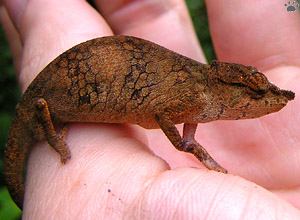
C. brevicornis, male, PN Montagne d'Ambre. |
In some places you can easily find a few dozen chameleons in one night by looking through dense shrubs and vine tangles. |

C. brevicornis, female, PN Montagne d'Ambre. |
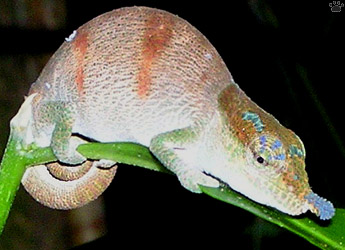
C. boettgeri, PN L'Ankarana. |
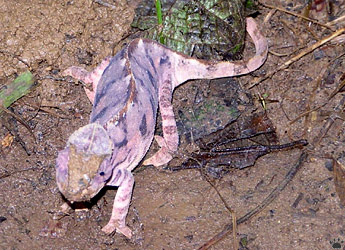
C. marojezensis building a nest, PN Marojejy. |
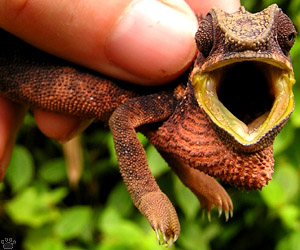
C. oshaughuesseni, PN Ranomafana. |
In spring or fall, female chameleons descend to the ground, assume appropriate coloration, and dig shallow nests to lay a few eggs in dry sandy soil. |

C. nasuta, PN Masoala. |

Chameleon eyes, Madagascar. |

C. hilleniusi, PN L'Ankarana. |
According to recent research, chameleons have first evolved on Madagascar. Later they colonized nearby islands and Africa; one species even made it to India and Southern Europe. But they are still most diverse and abundant on Madagascar: more than half of 150-170 known species occur here. |
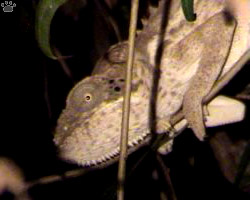
C. hilleniusi, PN L'Ankarana. |

Habitat of numerous chameleons and other reptiles, Anja Nature Reserve. |
Part 8: Other Reptiles
Back to Part 6
Home
|